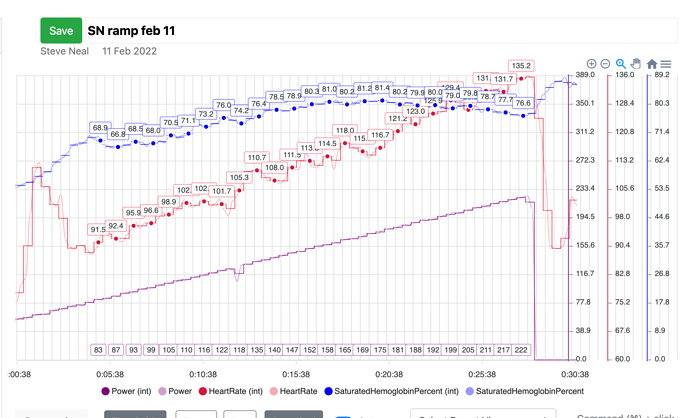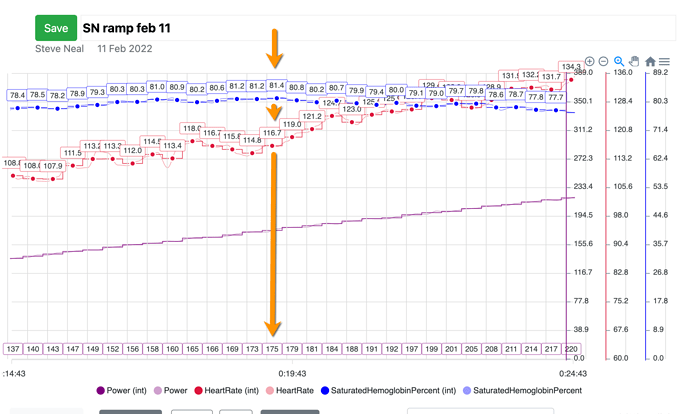I love the idea of a daily test, have been doing this in a few ways for over 20 years.
When you commit to a simple test, and follow the trends over time it is amazing what you can learn.
The one I have been playing around with for about a year is a continuous ramp from 50w to 230w over 30m, but I stop it 5m after peak smo2.
zooming in on the peak, tracking peak smo2, heart rate and power. It is most 165-175w, on good days it has bene as high as 220w, and tired days as low as 135w.
I just feel anyone who keeps track 2 - 3 times a week of a simple test that they can repeat, will really help you understand your training. How did you feel when you see certain results in the test? Then after a period of time you should be able to decide what to do on the day based on your test.
Love it.
The training monotony…this is a big one. I think one of the things we need to pay attention to as cyclists is most of us are just cycling, so we have to be careful of this.
Even taking a different route, riding on a different surface, etc can really help us do the same or similar training more often.
Cross country skiing is a sport I have a big background in, it was always easier to more intensity in a week and feel fresh. Pole run hill repeats one day hard, tempo session on the roller skis another and a fartlek mtb ride another. It just always seemed fun. Trying the same plan on a bicycle can take it’s toll.
Another reason why I often suggest training a little easier than you think more often is because of our limited options for training stimulus compared to a skier.
I have no idea, but I wonder if all of that training on skates would we have seem the same result? AKA I like that he trained another sport.




